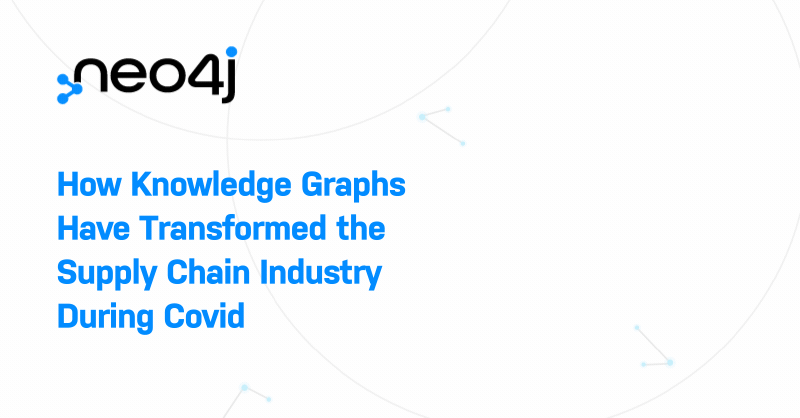How Knowledge Graphs Have Transformed the Supply Chain Industry During COVID

Sr. Program Director, Knowledge Graphs
3 min read

March 2020. A deadly virus, COVID-19, shut the whole world down in one fell swoop.
The coronavirus pandemic affected all sectors of the economy, from grocery stores and meat processing facilities, to nail salons and movie theaters, to warehouses and big box stores. All of these businesses had one thing in common – they saw their supply chains interrupted, demand for their products and services decline, and shortages in supplies. Nearly every aspect of the global supply chain from manufacturing to transportation and logistics was impacted.
In the continued wake of the pandemic, supply chain visibility and resilience is now top of mind for many companies.
There are a few key trends that the pandemic has spawned within the supply chain industry. The first is the acceleration of digital transformation projects. Projects that took three years pre-pandemic are now taking three months! Secondly, there has been a rapid move to the cloud, so companies can quickly spin up environments to host mission-critical supply chain applications. And last but not least, over the last 18 months, we have seen a sharp surge of supply chain customers using Neo4j for various use cases – spanning logistics, operations, marketing, sales and services including bill of materials management, root cause analysis, warranty analysis, and route optimization.
It comes as no surprise to us that supply chain companies are turning to knowledge graphs! A knowledge graph is an interconnected dataset that’s been enriched with meaning so users can analyze the underlying data and use it for complex decision-making.
Today’s supply chains are nonlinear, complex integrated networks involving hundreds or thousands of multi-tier suppliers and other players such as partners, OEMs, customers, and many more – and require complete end-to-end visibility in order to proactively address issues – whether it’s a contamination outbreak or the identification of an alternate supplier for a highly impacted one. In addition, security, transparency, and agility have never been more complex or more vital, and new ways are needed to model and analyze the highly complex interdependencies to ensure the resiliency of supply chains.
And that is why supply chain companies need knowledge graphs. Because it’s a relationship-centric approach, using knowledge graphs allows supply chain companies to better manage, analyze, and visualize their data, providing them a truly trackable and in-depth picture of all products, suppliers, and facilities – and the relationships between them.
When supply chains reimagine their data as a knowledge graph, they transform a complex problem into a simple one!
I was thrilled to be on a panel with George Eapen, Group CISO, Petrofac and Edosa Odaro, Head of Data, AIG where we discussed “Visualizing an Intelligent, Secure Supply Chain” hosted by Hot Topics on December 9. The discussion was thought-provoking and included a wide range of questions, such as “How are supply chain companies re-evaluating their supply chains to improve their resilience?” and “What do technology leaders need to build an increasingly intelligent data-driven relationship with stakeholders across the supply chain?”
In this discussion, both Odaro and Eapen stressed the importance of resilience, with the need to remain transparent and secure through the pandemic and beyond. Eapen elaborated on how the pandemic impacted their Tier 1 suppliers and the urgent need to target unvetted third-party suppliers, which comes with its own risk.
At Petrofac, he mentioned how they’ve moved to tools-based systems to do due diligence to “know their suppliers” better. I thought this was especially interesting, as it’s akin to Neo4j banking customers doing due diligence on their customers for KYC (Know Your Customer) in order to determine and verify their identities. With Neo4j, banks get a total view of a client with the links to connected parties and can quickly identify any risks the client may pose. The supply chain industry is now following suit with how they classify risk among their suppliers.
Find out how knowledge graphs can help with your supply chain. Check out use cases and customer stories.
I hope I have given you enough of a teaser! To learn more, watch our session at The Summit: Visualising an Intelligent, Secure Supply Chain.








